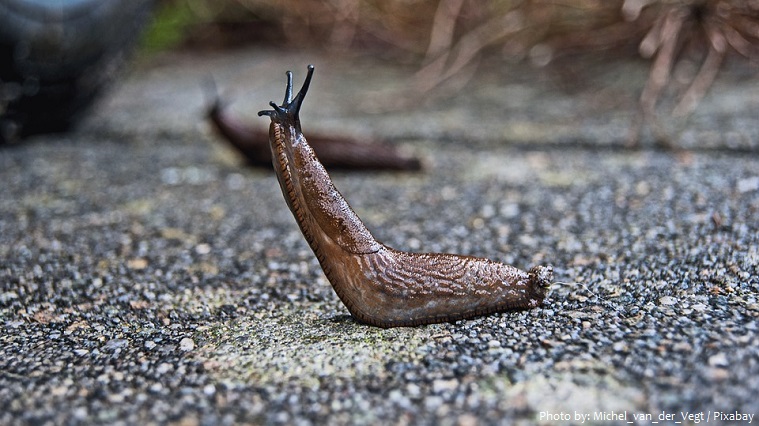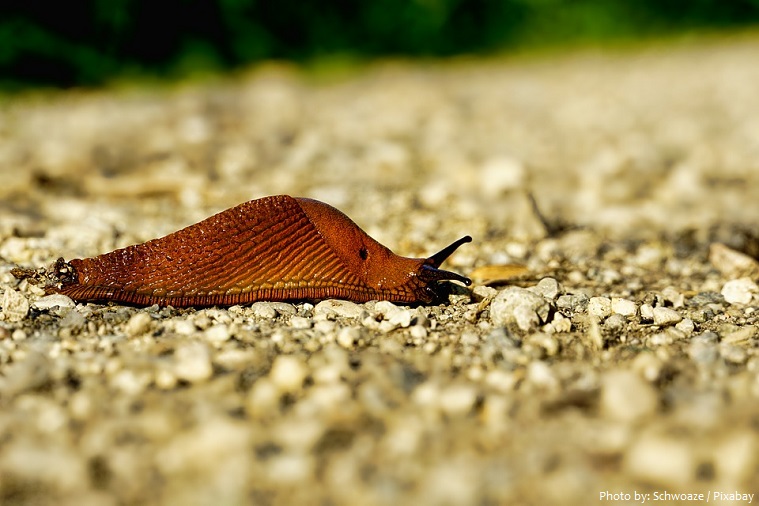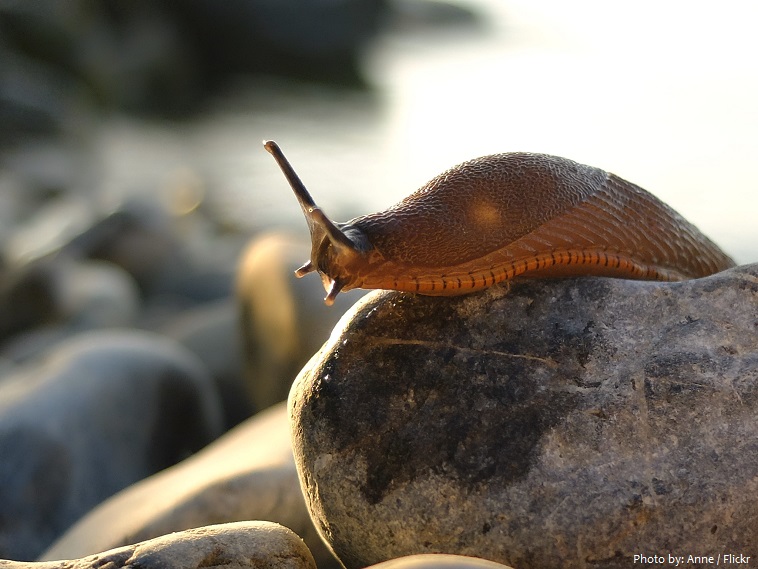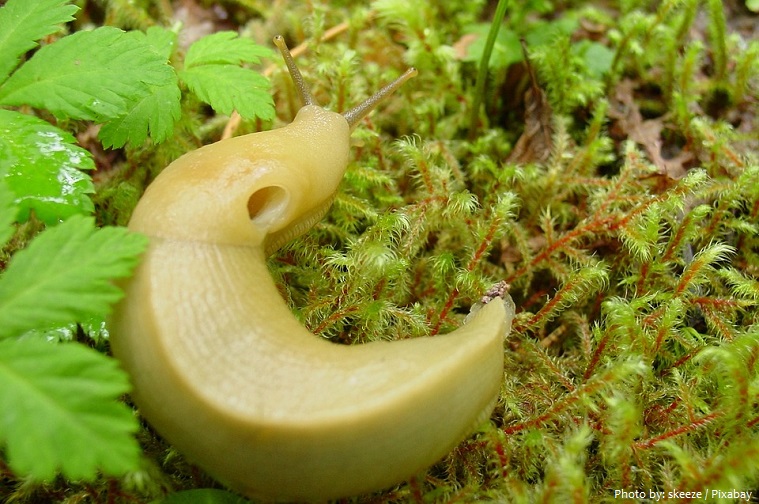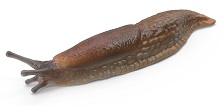Slug, or land slug, is a common name for any apparently shell-less terrestrial gastropod mollusc.
There are thousands of species of slugs.
Slugs prefer to live in damp, cool conditions. They are found around the world and are hardy enough to live in most climates as long as they have moisture. Many species are most active after rain.
A typical slug habitat is near human-made structures, such as a garden, a farm or a garbage dump. Slugs often frequent compost piles and can easily climb over logs and other structures to reach new habitats. They seek shelter underneath flower pots, wood pieces, leaves and other items during the day, and they come out at night to search for food and lay eggs.
Depending on the species they can live 1 to 6 years.
Slugs’ bodies are made up mostly of water and, without a full-sized shell, their soft tissues are prone to desiccation. They must generate protective mucus to survive.
Like the terrestrial snails of the same order, slugs have a distinct head with a mouth, tentacles bearing eyes, and a lung for breathing air.
The bottom side of a slug, which is flat, is called the ‘foot’. Like almost all gastropods, a slug moves by rhythmic waves of muscular contraction on the underside of its foot.
The slugs move by secreting a slimy fluid on which they travel to reduce friction and prevent damage to their body tissues.
Most slugs have four ‘feelers’ or tentacles on their head. The upper two (the “optical tentacles”) see light and have eyespots at the ends, while the lower two (the “sensory tentacles”) are used for smelling. The tentacles are retractable, and can regrow if lost.
A slug does not have a traditional nose, but rather a pair of tentacles that it uses to smell. A common misconception about slugs is that they have four noses. The number of tentacles is the underlying reason for this misconception.
Slugs average approximately 27,000 ‘teeth’. They need so many teeth because instead of chewing their food, they have a ribbon-like flexible band of microscopic teeth called a radula. This acts like a circular saw — cutting through vegetation and eating it as they go. When their teeth wear out new rows of teeth move forward and replace them.
Slugs spend the majority of their lifetimes eating. They eat many things including leaves from living plants, algae, lichens, herbs, mushrooms, vegetables, fruits and even carrion. Some slugs are predators and eat other slugs and snails, earthworms and insects.
One slug can eat its own body weight in food several times each day, which makes them extremely harmful in gardens.
Some slug species hibernate underground during the winter in places with cold winters, but in other species, the adults die in the autumn.
Slugs contain both male and female organs, which allows them to reproduce quickly once their reproductive organs have matured and when there is more than one slug in an area. A few days later, the slugs lay approximately thirty eggs in a hole in the ground, or beneath the cover of an object such as a fallen log.
When attacked, slugs can contract their body, making themselves harder and more compact and more still and round.
Frogs, toads, snakes, hedgehogs, salamanders, turtles, humans, and also some birds and beetles are slug predators.
While slugs can contain parasites that are potentially harmful to the health of humans, they are rarely if ever poisonous.
